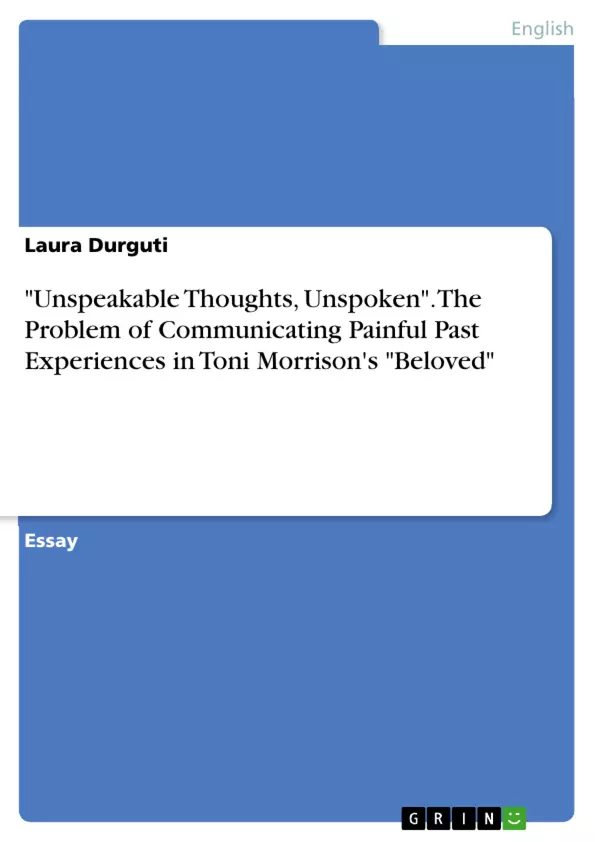In the fragmented novel Beloved Toni Morrison plunges the reader in the middle of 1873, eight years after the end of the Civil War. The readers discover the former black slaves’ attempt to fight their haunting memories on the one hand and to find their own language to talk about their painful past on the other. The protagonists of the novel know that healing from the painful past is the key to a better future. Therefor, one of the ways to evacuate the painful past is to talk about it in order to get over it. However, due to their profound trauma the characters of the novel find their “speech blocked” (Wyatt) impossible to express their past experiences. Through the use of circumlocutions, the tropes, the songs, the dancing, the crying and the fragmentation of the novel, Morrison demonstrates that storytelling in Beloved is an important and a problematic issue thus drawing attention to the problem of speaking about things that are difficult or even impossible to communicate.
Table of Contents
- "Unspeakable Thoughts, Unspoken"¹
- The Problem of Communicating Painful Past Experiences in Beloved
- Sethe's Struggle to Communicate Her Past
- The Use of Circumlocutions
- The Killing of Beloved
- The Scars of the Past
- The Loss of Milk
- The Power of Song and Dance
- Baby Suggs' Ceremony
- Paul D's Song
Objectives and Key Themes
This analysis of Toni Morrison's Beloved explores the challenges faced by former slaves in communicating their traumatic past experiences. The text focuses on how characters grapple with the complexities of language and storytelling in the aftermath of slavery.
- The Difficulty of Articulating Trauma
- The Role of Circumlocutions and Metaphor in Storytelling
- The Healing Power of Song and Dance
- The Impact of Slavery on Identity and Community
- The Importance of Remembering and Reclaiming History
Chapter Summaries
The analysis begins by examining Sethe's struggles in communicating her past, particularly the killing of her daughter, Beloved. The use of circumlocutions, euphemisms, and fragmented narrative highlights the difficulty she faces in confronting and articulating her trauma.
The text then explores the symbolic significance of Sethe's scars, which represent the physical and emotional wounds inflicted by slavery. The loss of her milk is presented as a profound loss of her maternal role and identity, further illustrating the lasting impact of slavery on her life.
The analysis then delves into the role of song and dance in community healing, focusing on Baby Suggs' ceremonies that offer a space for collective expression and remembrance. Paul D's use of song is examined as a way to cope with his own traumatic past experiences and connect with his community.
Keywords
The analysis focuses on key themes such as trauma, memory, language, storytelling, identity, community, healing, and the lasting impact of slavery. It explores the use of circumlocutions, metaphor, song, and dance as strategies for confronting and communicating traumatic experiences.
- Quote paper
- Laura Durguti (Author), 2018, "Unspeakable Thoughts, Unspoken". The Problem of Communicating Painful Past Experiences in Toni Morrison's "Beloved", Munich, GRIN Verlag, https://www.grin.com/document/418490



